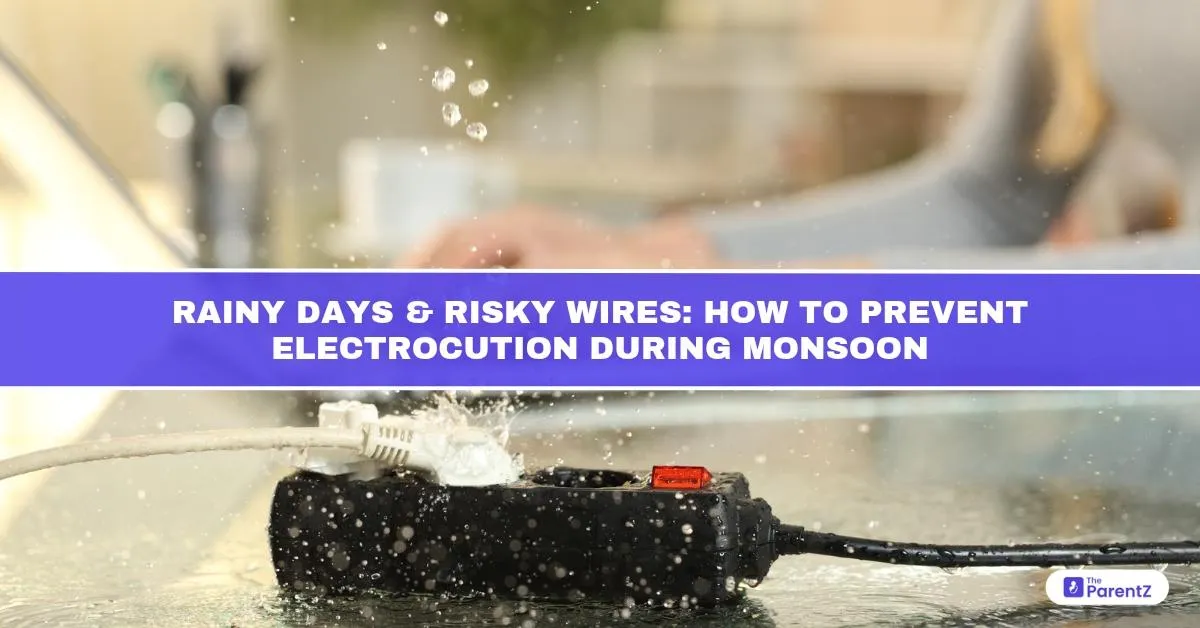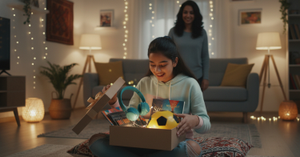Monsoon brings not only cooler weather but also a surge in electrocution incidents, especially in densely populated urban and semi-urban areas. With increased water-logging, exposed electrical wiring, and damaged infrastructure, the rainy season turns everyday settings like roads, school corridors, and even homes—into potential electrocution zones.
According to the National Crime Records Bureau (NCRB), India reports over 2,500 accidental electrocution deaths annually, with a sharp spike between June and September. Many of these accidents involve children and adolescents. Prevention requires awareness, immediate action on unsafe conditions, and simple, practical safety steps.
Why the Risk Rises in Monsoon
Electricity and water are a fatal combination. During monsoon, the risk is amplified due to:
- Exposed or frayed wires that come into contact with rainwater
- Water accumulation near transformers, poles, and open circuits
- Home appliances getting wet or used with wet hands
- Improperly grounded wiring and absence of Residual Current Devices (RCDs)
- Rusting switchboards and overloaded plug points
When water enters electrical systems, it compromises insulation and conductivity. Even low-voltage currents can become dangerous in wet conditions, leading to fatal ventricular fibrillation, especially in children and elderly individuals with slower response times or weaker reflexes.
High-Risk Areas for Electrocution in Monsoon
- Roads with electric poles or streetlights in contact with flooded drains
- Construction sites where temporary wiring is not waterproof
- Classrooms and schools with old, rusted switchboards
- Homes with poor earthing or no circuit breakers
- Balconies with plugged-in appliances exposed to rain splash
How to Prevent Electrocution at Home
Dr. A. K. Singh, Senior Electrical Safety Officer at Delhi State Power Board, emphasizes:
“Most domestic accidents during monsoon occur due to negligence—like touching wet switches or operating appliances barefoot. Parents must educate children and upgrade household protections.”
Here are key safety measures:
- Install a Residual Current Device (RCD) or Earth Leakage Circuit Breaker (ELCB) to cut off power during leakage
- Avoid using any appliances with wet hands or in damp rooms (especially irons, blenders, and phone chargers)
- Unplug unused devices and avoid daisy-chaining multiple plug points
- Do not touch circuit breakers, mains, or meters during rain
- Use only ISI-certified appliances and wires, and replace frayed cords immediately
- Keep power boards away from floors or areas prone to water splashes
Preventing Outdoor Electrocution During Rain
Children walking to school, playing in gullies, or even standing near electric poles are often unaware of hidden electrical dangers.
Teach children to:
- Never step into water near electric poles or open meters
- Avoid touching light poles, fences, or telephone boxes during or after rain
- Never fly kites or touch wires hanging from poles
- Wear rubber-soled footwear in the rainy season
- Alert adults if they see sparks, shocks, or wires lying in water
If any part of their body or bag gets entangled with a wire, they should not touch it further or try to remove it themselves and instead call for help.
School and Public Safety Measures
School administrators must ensure:
- Regular electrical inspections, especially of aging switchboards
- Covered electrical panels and sockets away from water leak zones
- Grounded wires and protected meters
- No exposed wires in play areas, corridors, or restrooms
- Generator rooms or inverters should be waterproofed and child-inaccessible
Local bodies and municipal corporations should cover open junction boxes, repair streetlights, and clearly mark danger zones near electric poles in flooded areas.
What to Do in Case of Electrocution
- Do NOT touch the person directly if they’re in contact with current.
- Turn off the power from the main switch, if safe to access.
- Use a wooden stick, dry rope, or non-conductive material to separate the victim from the source.
- If the person is unresponsive, check for breathing and pulse, and start CPR immediately.
- Call emergency services (dial 108 or 112 in India).
- Take the victim to a hospital even if they appear fine as internal injuries or heart irregularities may not be immediately visible.
Real-Life Cautionary Tale: Rohit, Age 13, Bengaluru
Rohit, a Class 8 student, suffered a minor electric shock while holding an umbrella near an electric pole submerged in water outside his school gate.
“He said he felt a sudden jolt in his hand and fell backward. Luckily, he wasn’t standing in deeper water, and we got him out in time,” said his mother. The school had open wires tied near the fence. The case was reported and the pole was insulated later.
This incident reflects how simple infrastructure negligence can endanger children.
Conclusion
Monsoon must not be taken lightly when it comes to electrical safety. Electrocution incidents are predictable and preventable. Simple changes in home wiring, footwear, awareness, and community infrastructure can protect lives—especially those of children.
Rain may bring fun and relief, but water plus exposed wires is a silent killer. Be alert, educate your children, report hazards, and prioritize electrical safety as part of your rainy season checklist.
References
- National Crime Records Bureau. Accidental Deaths & Suicides in India – 2022.
- Ministry of Power, Government of India – Electrical Safety Guidelines
- Indian Electrical & Electronics Manufacturers’ Association (IEEMA) – Safety Advisory Notes
- American Heart Association. CPR Guidelines in Electrocution-Related Arrests
- Journal of Clinical Forensic Medicine. “Patterns of Electrocution Injuries in Urban Monsoon Seasons.”








Be the first one to comment on this story.